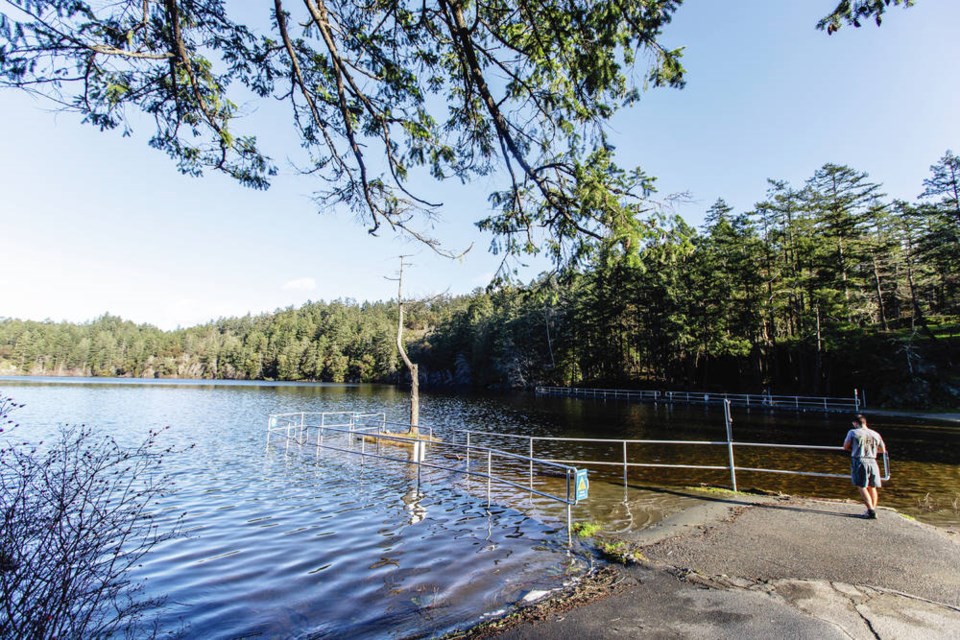A Victoria man is looking for answers after finding four dead animals, including deer and a beaver, in Thetis Lake during a two-week period.
Noel Frayne, a retired massage therapist and avid hiker and paddler, said he was unnerved to come across three dead deer in the lower lake and a dead beaver in the upper lake.
On Dec. 28, Frayne was out for a paddle in his inflatable raft when he saw an older dead deer in the water. On Jan. 6, he found two young smaller deer in the lower lake. Then on Jan. 10, he saw a partially submerged beaver in the upper lake.
There has been no activity at the culvert where the two lakes join, where a beaver had been trying to build a dam, he said.
“I’m out there a lot,” Frayne said Wednesday. “If I see a dead animal I think: ‘Fine, I’ll let it get back to nature.’ But finding four dead animals in the water, I’d like to know what killed them. The deer wouldn’t normally be in the lake.”
He said he sent the Capital District Regional Parks department photographs and screenshots of the locations where the animals were found. Parks staff have been out trying to locate the animals for necropsies to determine their cause of death, said Frayne, who is concerned the deaths might have been caused by blue-green algae blooms at Thetis Lake.
The CRD could not be reached for comment, but has posted warnings about the toxic algae blooms at the lake. The algae is seen most in water that is shallow, slow-moving or still, so it can be found in ponds and the shore areas of lakes and streams.
People who get the algae on their skin can end up with skin rashes and irritation of the ears and eyes. Ingesting water containing the cyanotoxins in the algae can cause headaches and abdominal pain in humans, and lead to lethal liver damage in dogs. Animals exposed to the algae can also experience jaundice and sensitivity to sunlight.
Frayne said he has made it his project to pick up bottle, cans and other litter from the lakeshore for the last two years, and he is always “looking and observing” when he’s there.
“I’ve picked up more than 2,000 things off that lake.”
ldickson@timescolonist.com



